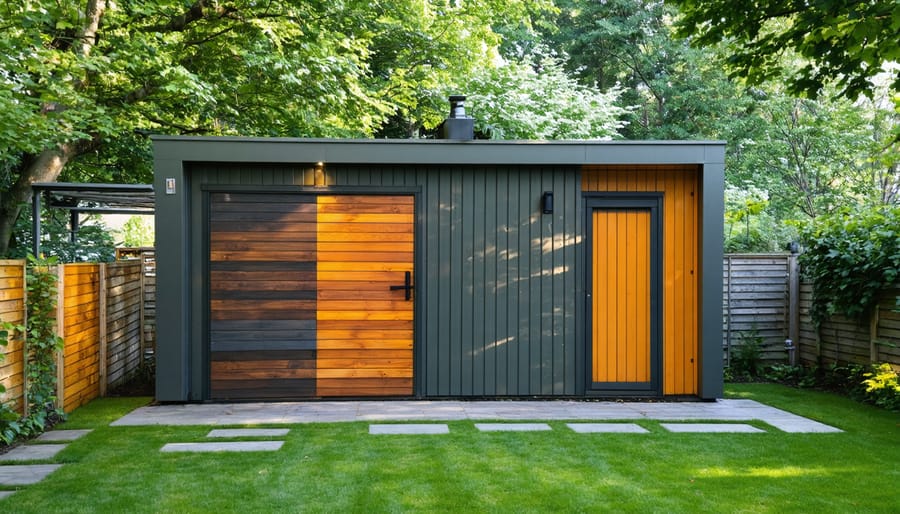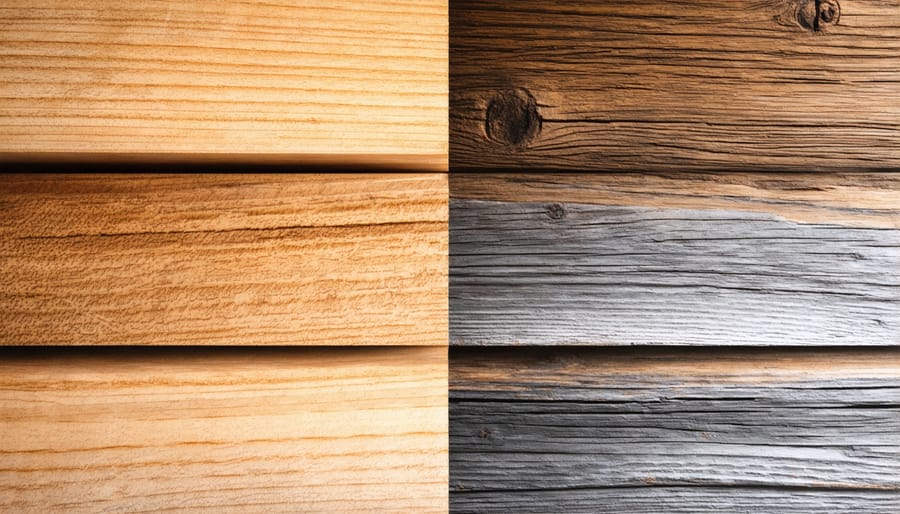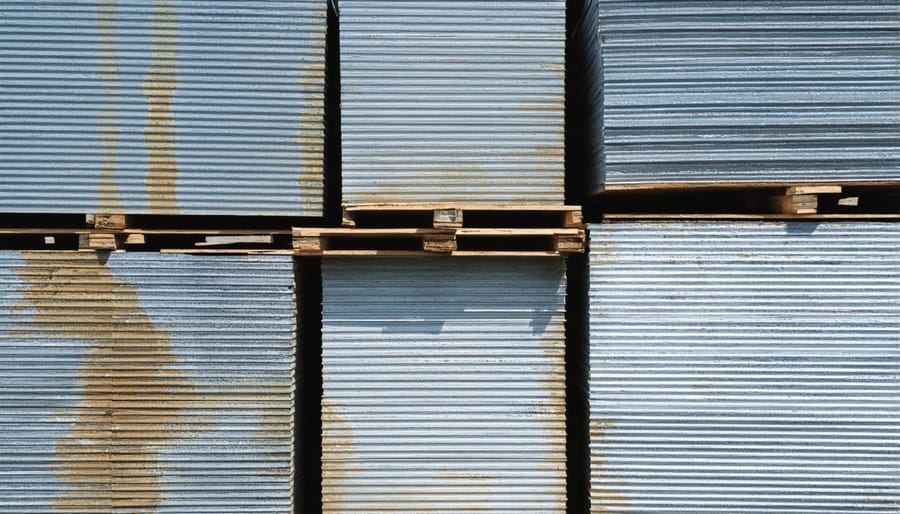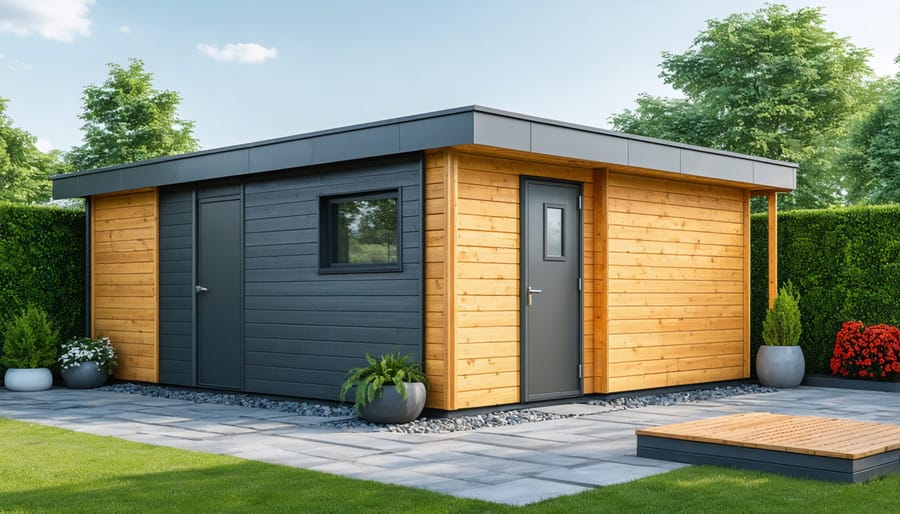These Eco-Friendly Shed Materials Cut Your Carbon Footprint (And Save Money)

Transform your backyard storage vision into reality by selecting the right construction materials for a durable, sustainable shed that stands the test of time. Modern shed building has evolved beyond traditional lumber, embracing innovative materials that combine environmental responsibility with practical durability.
From recycled composite boards and sustainably harvested wood to advanced metal alloys and eco-friendly concrete foundations, today’s shed builders enjoy unprecedented material choices that protect both their belongings and the planet. These materials offer superior weather resistance, minimal maintenance requirements, and enhanced longevity while reducing environmental impact.
The key to successful shed construction lies in matching your local climate conditions with appropriate materials – considering factors like moisture resistance, thermal properties, and structural integrity. Whether you’re planning a compact garden tool storage or a spacious workshop, selecting the right combination of materials will ensure your shed remains functional and attractive for decades.
Smart material selection also impacts your project’s bottom line, with many sustainable options offering long-term cost benefits through reduced maintenance needs and extended lifespan. By understanding the properties and applications of different construction materials, you can create a storage solution that perfectly balances durability, sustainability, and aesthetic appeal.

Reclaimed Wood: Nature’s Second Chance
Where to Find Quality Reclaimed Wood
Reclaimed wood can transform your shed into an eco-friendly masterpiece with unique character, and finding quality materials is easier than you might think. Local salvage yards and architectural salvage stores are excellent starting points, often offering a variety of well-preserved timber from old barns, factories, and warehouses.
Online marketplaces like Facebook Marketplace and Craigslist frequently list reclaimed wood from demolition projects. Many lumber retailers now also maintain dedicated sections for recycled materials. For premium selections, specialized reclaimed wood dealers offer carefully processed and graded materials, though at higher prices.
When selecting reclaimed wood, look for pieces that are truly dry and free from active insect damage. Check for structural integrity by tapping the wood – it should produce a solid sound rather than a hollow one. Avoid pieces with excessive nail holes or splitting, as these can compromise strength.
Remember to factor in cleaning and preparation time. Most reclaimed wood needs thorough inspection, cleaning, and possibly treatment before use. Consider working with smaller pieces for your first reclaimed wood project to gain experience in handling and preparing these materials.
Preparing Reclaimed Wood for Construction
Before incorporating reclaimed wood into your shed construction, it’s essential to properly prepare and protect wood to ensure its longevity and structural integrity. Start by thoroughly inspecting each piece for nails, screws, or other metal fragments that could damage your tools or compromise safety. Use a metal detector to catch hidden fasteners, and remove them carefully with a pry bar or hammer.
Clean the wood using a wire brush to remove dirt, loose paint, and debris. For stubborn areas, a pressure washer on low setting can help, but allow the wood to dry completely afterward. Check for signs of rot, insect damage, or structural weakness, discarding any pieces that don’t meet safety standards.
Treatment is crucial for reclaimed wood’s durability. Apply a borate-based solution to prevent future insect infestations and fungal growth. Once the wood is fully dry, sand rough areas to achieve a more uniform surface while preserving the wood’s character. Finally, seal the wood with an appropriate weather-resistant finish to protect against moisture and UV damage.
Consider cutting oversized pieces initially, as reclaimed wood may have unusable sections. Store the prepared pieces in a dry, covered area until you’re ready to begin construction, keeping them elevated off the ground and properly stacked to prevent warping.
Recycled Metal Solutions
Corrugated Panels vs. Sheet Metal
When choosing between corrugated panels and sheet metal for your shed, each option offers unique benefits worth considering. Corrugated panels, with their wave-like pattern, provide excellent structural strength while using less material. This makes them a more eco-friendly choice and often more budget-friendly too. They’re particularly effective at channeling rainwater and preventing leaks when used for metal roofing installation.
Sheet metal, on the other hand, offers a sleeker, more modern appearance and can be easier to clean due to its flat surface. While both materials are recyclable, corrugated panels typically use about 30% less metal to achieve similar strength, making them the more sustainable choice. They’re also lighter and easier to handle during installation.
Consider your local climate when deciding – corrugated panels perform better in areas with heavy rainfall or snow, while sheet metal might be preferable in regions with high winds. Both options are long-lasting and low-maintenance, typically offering 20-30 years of service life when properly installed and maintained.

Rust Prevention and Maintenance
To protect your metal shed materials from rust, start with a thorough cleaning using a wire brush and mineral spirits to remove any existing rust or debris. Apply a quality rust-inhibiting primer specifically designed for metal surfaces, followed by rust-resistant paint or coating. For recycled metal materials, pay special attention to edges and joints where moisture tends to accumulate.
Consider applying a clear protective sealant as an additional barrier against moisture. In coastal areas or regions with high humidity, you might want to add sacrificial anodes to protect metal components through galvanic corrosion prevention.
Regular maintenance is crucial for long-term protection. Inspect your shed at least twice a year, particularly after severe weather. Look for signs of rust formation, paint bubbling, or coating damage. Address any issues immediately to prevent spreading. Keep gutters clean and ensure proper drainage around your shed to minimize water exposure.
For added protection, consider installing vapor barriers between different metal types to prevent galvanic corrosion, and maintain good ventilation inside your shed to reduce moisture buildup. Small investments in prevention can save significant repair costs down the line.
Eco-Composite Materials
Recycled Plastic Lumber
Recycled plastic lumber offers an innovative and eco-friendly alternative for shed construction that’s gaining popularity among environmentally conscious homeowners. Made from post-consumer plastic waste, this material combines durability with sustainability, offering a wood-like appearance without the maintenance headaches of traditional lumber.
One of the biggest advantages of recycled plastic lumber is its exceptional resistance to moisture, rot, and insects. Unlike wood, it won’t split, crack, or warp over time, making it ideal for outdoor structures in any climate. Many homeowners appreciate that it never needs painting or sealing, saving both time and money on long-term maintenance.
While the initial cost might be higher than traditional wood, the long-term value becomes apparent through its durability and minimal upkeep requirements. It’s perfect for shed flooring, wall panels, and even decorative trim work. The material comes in various colors and textures, allowing you to match your home’s exterior seamlessly.
For those concerned about environmental impact, using recycled plastic lumber helps reduce plastic waste in landfills while creating a lasting structure that won’t need replacement for decades.

Mixed Material Composites
Modern mixed material composites offer an innovative solution for shed construction, combining the best qualities of different materials. Wood-plastic composites (WPCs) have gained popularity among homeowners due to their exceptional durability and low maintenance requirements. These materials blend wood fibers with recycled plastics, creating a product that resists rot, insects, and weathering while maintaining a natural wood-like appearance.
The benefits of composite materials extend beyond just durability. They’re eco-friendly, often incorporating recycled materials, and require no painting or staining. While the initial cost might be higher than traditional wood, the long-term savings on maintenance and replacement make them a smart investment.
Other mixed material options include fiber cement composites and engineered wood products. These alternatives offer excellent structural stability and can withstand harsh weather conditions. Many homeowners appreciate that these materials come in various textures and colors, allowing them to match their home’s exterior perfectly while enjoying the peace of mind that comes with a low-maintenance solution.
Natural and Renewable Options
For environmentally conscious builders, natural and renewable materials offer exciting possibilities for sustainable shed construction. Bamboo stands out as a rapidly renewable resource that’s both strong and versatile. Growing up to three feet per day, bamboo reaches maturity in just 3-5 years, making it an incredibly sustainable choice. Its natural strength rivals that of traditional lumber, while its distinctive appearance adds a unique aesthetic appeal to your shed design.
Hemp-based building materials are gaining popularity among eco-friendly builders. Hemp boards and panels, made from compressed hemp fibers and natural binders, provide excellent insulation and durability. These materials are naturally resistant to mold and pests, reducing the need for chemical treatments. When combined with other weather-resistant materials, hemp products can create lasting structures that harmonize with nature.
Straw bales, another renewable option, offer outstanding insulation properties when properly sealed and protected. Modern straw bale construction techniques have evolved to create sturdy, well-insulated structures that can last for decades. These materials work particularly well for larger storage sheds and workshop spaces.
Cork, harvested sustainably from cork oak trees, provides natural water resistance and insulation. It’s ideal for shed flooring and wall panels, offering both functionality and environmental benefits. The cork harvest doesn’t harm the trees, which continue producing cork bark for up to 200 years.
These natural materials often require less energy to produce than conventional building materials, reducing your shed’s overall environmental impact. While initial costs might be higher, their durability and environmental benefits make them worthwhile investments for sustainable construction projects.
Choosing sustainable materials for your shed construction isn’t just good for the environment – it’s a smart investment in your property’s future. Throughout this guide, we’ve explored various eco-friendly options that combine durability with environmental responsibility. Reclaimed wood, recycled metal, and sustainable composites offer excellent alternatives to traditional materials, often providing better longevity and reduced maintenance needs.
When planning your shed project, consider starting with recycled materials where possible, particularly for the framework and siding. Sustainable insulation options and eco-friendly roofing materials can significantly reduce your environmental impact while keeping your stored items protected from the elements. Many homeowners report long-term cost savings through reduced maintenance and improved energy efficiency when using these materials.
For the best results, we recommend working with locally sourced materials when available, choosing certified sustainable wood products, and incorporating proper ventilation systems to extend the life of your materials. Remember that sustainable doesn’t mean compromising on quality – today’s eco-friendly building materials often outperform their traditional counterparts while helping preserve our planet’s resources for future generations. Your shed can be both functional and environmentally responsible with the right material choices.

